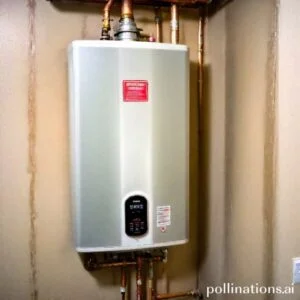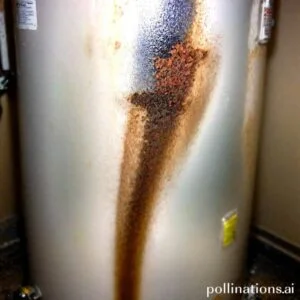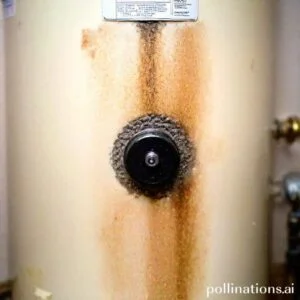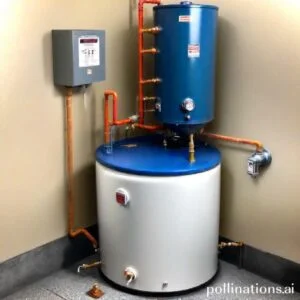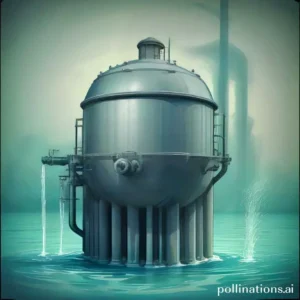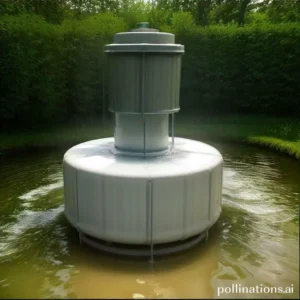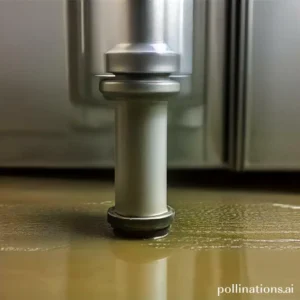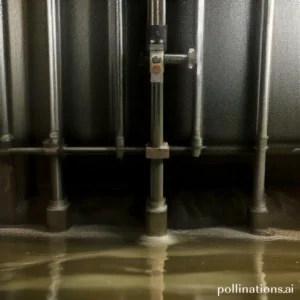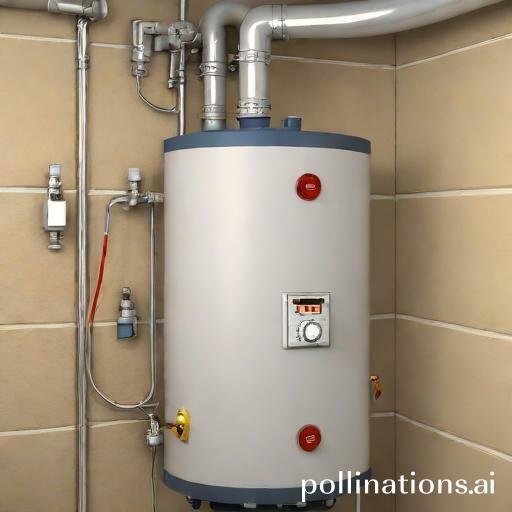
Sediment in water heaters can lead to several problems. Initially, it can reduce the efficiency of the heater, causing it to take longer to heat water and use more energy.
Sediment buildup can also clog pipes and valves, leading to reduced water flow and pressure. Over time, sediment can cause corrosion and damage to the water heater, shortening its lifespan.
Additionally, sediment can affect the quality of the water, making it appear discolored or giving it a strange taste or odor. Regular maintenance and flushing of the water heater can help prevent these issues caused by sediment.
Causes of Sediment Buildup in Water Heaters
Sediment buildup in water heaters can lead to various issues, ranging from decreased efficiency to potential damage. Discerning the causes of sediment buildup is crucial in preventing these problems and ensuring the longevity of your water heater.
1. Hard Water
One of the primary causes of sediment buildup in water heaters is hard water. Hard water contains high levels of minerals, such as calcium and magnesium. As the water is heated, these minerals precipitate and settle at the bottom of the tank, forming sediment. Over time, this sediment layer can become thick, affecting the performance of the water heater.
Regularly testing and treating the water for hardness can help prevent excessive sediment buildup. Water softeners or descaling agents can be used to reduce mineral content and minimize sediment formation.
2. Aging Water Heaters
As water heaters age, they become more prone to sediment buildup. Over the years of use, the accumulation of sediment can gradually reduce the efficiency of the heater, resulting in higher energy consumption and decreased hot water supply.
Replacing an old water heater with a newer model can help prevent sediment buildup. Modern water heaters often come with features designed to minimize sediment accumulation, such as self-cleaning mechanisms or improved tank design.
3. Lack of Regular Maintenance
Failure to perform regular maintenance on water heaters can contribute to sediment buildup. Without proper maintenance, sediment can continue to accumulate unchecked, leading to reduced efficiency and potential damage to the heater.
Regular flushing of the water heater tank is essential to remove sediment and maintain optimal performance. This process involves draining the tank and flushing it with clean water to remove any accumulated sediment. Consult the manufacturer’s guidelines or seek professional assistance to ensure proper maintenance procedures.
| Cause | Effects |
|---|---|
| Hard Water | Decreased efficiency, potential damage |
| Aging Water Heaters | Increased energy consumption, decreased hot water supply |
| Lack of Regular Maintenance | Reduced efficiency, potential damage |
Effects of Sediment Buildup in Water Heaters
In the realm of the performance of your water heater, sediment buildup can have a significant impact. Assimilating the effects of sediment accumulation is crucial in maintaining the efficiency and lifespan of your water heater. In this section, we will probe the various consequences of sediment buildup and how it can affect your water heating system.
1. Reduced Efficiency
One of the primary effects of sediment buildup in water heaters is reduced efficiency. As sediment accumulates at the bottom of the tank, it forms a layer that acts as an insulator. This insulation prevents the heat from the burner or heating element from efficiently transferring to the water, resulting in a longer heating cycle. This extended heating time not only wastes energy but also increases your energy bills.
To combat reduced efficiency, regular maintenance is essential. Flushing your water heater at least once a year can help remove sediment and maintain optimal efficiency. Additionally, installing a sediment filter can prevent the buildup altogether and ensure efficient heating performance.
2. Increased Energy Bills
As mentioned earlier, sediment buildup in water heaters can lead to increased energy bills. The longer heating cycles required to heat the water due to the insulating effect of sediment result in higher energy consumption. This increased energy usage translates to higher monthly bills, putting a strain on your finances.
To avoid unnecessary energy expenses, it is recommended to schedule regular maintenance for your water heater. By flushing out the accumulated sediment, you can restore the efficiency of your water heating system and reduce energy consumption, ultimately saving on your monthly bills.
3. Shortened Lifespan of Water Heaters
Sediment accumulation can significantly impact the lifespan of your water heater. The sediment layer at the bottom of the tank can cause corrosion and damage to the heating element or burner. This corrosion not only affects the performance of the water heater but also shortens its lifespan.
Regular maintenance, such as flushing the tank, is crucial in preventing sediment buildup and prolonging the lifespan of your water heater. By removing the sediment, you can reduce the risk of corrosion and ensure the longevity of your water heating system.
Signs of Sediment Buildup in Water Heaters
Regular maintenance and monitoring of your water heater is essential to ensure its optimal performance. One common issue that can arise over time is sediment buildup, which can negatively impact the efficiency and lifespan of your water heater. By being aware of the signs of sediment buildup, you can take timely action to prevent any further damage. Here are some key indicators to watch out for:
Noisy Operation
If you start hearing unusual noises coming from your water heater, such as popping or rumbling sounds, it may be a sign of sediment buildup. As sediment accumulates at the bottom of the tank, it can cause the heating element to overheat and produce these noises. Ignoring this issue can lead to a decrease in the heater’s efficiency and potential damage to its internal components.
Reduced Hot Water Supply
Another telltale sign of sediment buildup is a decrease in the amount of hot water your heater can provide. As sediment accumulates, it forms a layer at the bottom of the tank, reducing the available space for hot water storage. This can result in shorter showers, longer wait times for hot water, or even a complete lack of hot water. If you notice a significant decrease in your hot water supply, sediment buildup may be the culprit.
Discolored Water
If you turn on your hot water tap and notice discolored water, it could be a sign of sediment buildup. Sediment can cause the water to become cloudy, brown, or even rust-colored. This occurs when the sediment mixes with the hot water and gets pushed through the pipes. Not only is discolored water unpleasant, but it can also clog your plumbing fixtures if left unchecked.
To prevent sediment buildup and its associated issues, it is recommended to flush your water heater regularly. Flushing removes the accumulated sediment, allowing your heater to operate efficiently and extend its lifespan. Consult your water heater manufacturer’s guidelines or seek professional help to ensure the proper flushing procedure.
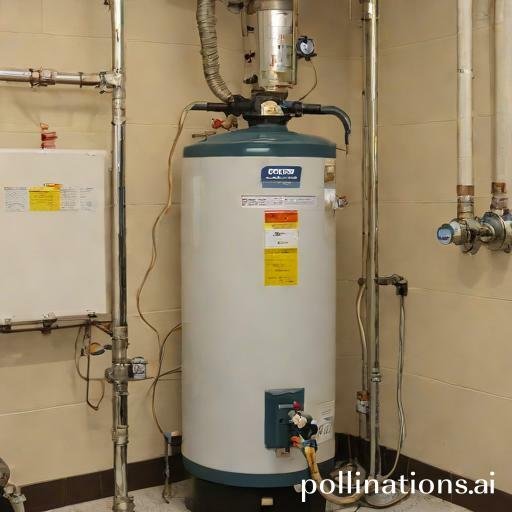
Preventing Sediment Buildup in Water Heaters
Relating to maintaining the efficiency and longevity of your water heater, preventing sediment buildup is crucial. Sediment, such as minerals and debris, can accumulate over time and reduce the performance of your water heater. In this article, we will investigate three effective methods to prevent sediment buildup and ensure the optimal functioning of your water heater.
1. Flushing the Tank
Regularly flushing the tank of your water heater is an essential step in preventing sediment buildup. This process involves draining the tank to remove any accumulated sediment. Flushing the tank not only helps to remove existing sediment but also prevents future buildup. By flushing the tank at least once a year, you can maintain the efficiency of your water heater and extend its lifespan.
2. Installing a Water Softener
Another effective method to prevent sediment buildup is by installing a water softener. Hard water, which contains high mineral content, can contribute to sediment accumulation in your water heater. A water softener helps to remove these minerals, reducing the chances of sediment buildup. By installing a water softener, you can protect your water heater and ensure its optimal performance.
3. Regular Maintenance
Regular maintenance is key to preventing sediment buildup and maintaining the efficiency of your water heater. This includes checking for any leaks, inspecting the anode rod, and ensuring proper insulation. By scheduling regular maintenance with a professional, you can identify and address any potential issues before they escalate. This proactive approach will not only prevent sediment buildup but also extend the lifespan of your water heater.
| Method | Description |
|---|---|
| Flushing the Tank | Draining the tank to remove accumulated sediment. |
| Installing a Water Softener | Removing minerals from the water to prevent sediment buildup. |
| Regular Maintenance | Scheduling inspections and addressing potential issues. |
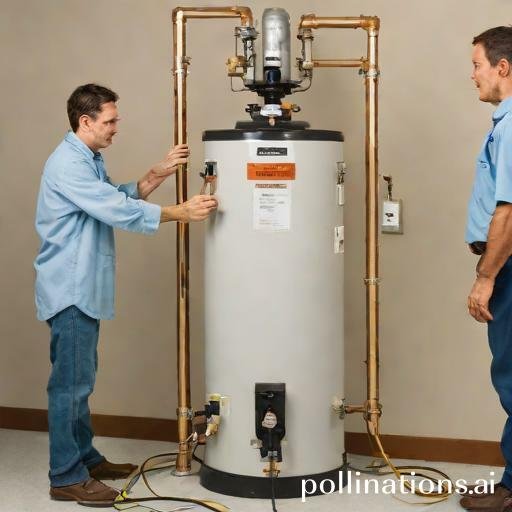
Removing Sediment Buildup in Water Heaters
Water heaters are essential appliances that provide hot water for various household purposes. Over time, sediment buildup can occur in the tank, affecting the efficiency and performance of the water heater. To maintain the optimal functioning of your water heater, vital to periodically remove the sediment. In this section, we will navigate different methods to effectively remove sediment buildup in water heaters.
1. Draining the Tank
Draining the tank is a simple yet effective method to remove sediment buildup. Start by turning off the power supply to the water heater. Locate the drain valve at the bottom of the tank and attach a hose. Place the other end of the hose in a suitable drainage area, like a floor drain or a bucket. Open the drain valve and let the water flow out until it runs clear. This process will help flush out the sediment and improve the overall performance of the water heater.
2. Flushing the Tank
Flushing the tank is another method to remove sediment buildup and ensure the longevity of your water heater. Begin by turning off the power supply and cold-water inlet valve to the water heater. Connect a hose to the drain valve and direct the other end to a suitable drainage area. Open the drain valve and allow the water to flow out. In the course of the water is flowing, open the hot-water faucet in your home to facilitate the flushing process. This will help dislodge and remove any sediment that has settled at the bottom of the tank.
3. Chemical Treatment
In some cases, draining and flushing may not completely remove stubborn sediment buildup. This is where chemical treatment can be effective. There are various chemical descaling agents available in the market specifically designed for water heaters. Follow the instructions provided by the manufacturer to safely and effectively use the chemical treatment. Integral to note that chemical treatment should be used as a last resort and only if recommended by a professional.
Regular maintenance and sediment removal are crucial for the efficient operation of your water heater. By complying with these methods, you can ensure that your water heater functions optimally, providing you with hot water whenever you need it.
| Method | Effectiveness | Time Required |
|---|---|---|
| Draining the Tank | High | 30 minutes |
| Flushing the Tank | Medium | 1 hour |
| Chemical Treatment | Low | 2-3 hours |
Bottom Line
Sediment buildup in water heaters can cause a range of problems, including reduced efficiency, increased energy costs, and even damage to the tank itself. Over time, sediment can accumulate at the bottom of the tank, creating a barrier between the heating element and the water. This can cause the heating element to work harder, leading to increased energy consumption and higher bills. Additionally, sediment can cause corrosion and rusting, which can weaken the tank and lead to leaks or other damage. To prevent these issues, it’s important to regularly flush your water heater and remove any sediment buildup. This will help to maintain efficiency, extend the life of your water heater, and ensure that you have a reliable source of hot water for years to come.
Read More:
1. Are There Preventive Measures To Avoid Sediment Buildup?
2. Diy Methods For Sediment Removal From Water Heater

